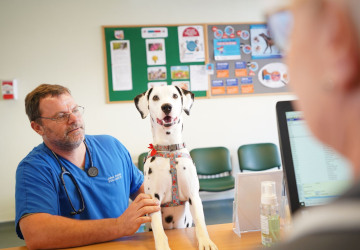
Puppy Socialisation Part 2
May 11, 2021
A report in 2016 by the British Veterinary Association showed that 98 per cent of vets had been asked to euthanase healthy pets for behavioural reasons. Many of these issues leading to those requests for euthanasia are entirely preventable.
These figures show the overwhelming need for adequate young age socialisation. Vets and some members of the public are aware of the what is meant by socialisation but perhaps there is a larger proportion of the general public that do not understand how to apply ‘socialisation’ in day-to-day situations. The outcomes of poor socialisation of puppies with other people and animals have long-term effects, such as abnormal fear responses, social inadequacies, hyperactivity, increased aggression and decreased learning ability. The period for learning socialisation skills is between 3 and 12 weeks of age. Behavioural organisation of the brain is affected during this early time in life and cannot be easily reversed by behavioural modification later in life (Champagne and Curley, 2005). The socialisation process continues beyond this critical early sensitive period for brain development. Owners must continue to regularly expose their pets to a wide variety of social and environmental enrichment throughout the first two years of their lives to ensure long-lasting learning. One researcher reported that lack of experience from three to six months of age was significantly associated with aggression to unfamiliar people and avoidance behaviour whilst another researcher reported development of fearful and aggressive behaviour up to 24 months of age.
Vets will advise on not taking the puppy out until 2 weeks after their second vaccination. This could mean that if the puppy’s second immunisation is at 12 weeks, the earliest opportunity to start the socialisation strategy would be from 14 weeks of age. Puppies obtain 95 per cent of their antibody protection via the first milk (colostrum) they drink. The individual puppies will have a variable amount of immunity, depending on numerous factors, such as the vaccination status of the dam, the amount of colostrum and the individual health of the puppies. Maternally derived antibodies (MDAs) start declining from six to nine weeks and hence the timing of the first vaccine. The presence of the MDAs interferes with the vaccine’s efficacy and even when the second vaccination is administered at 12 weeks of age, there is a chance that in certain puppies with high MDAs, that this vaccine will not provide a high enough antibody response to fully protect the puppy if challenged by a dose of the disease we are vaccinating against. For this reason, the World Small Animal Veterinary Association recommends giving a final vaccination at 16 weeks of age.
Owners are therefore caught in a dilemma of preventing disease by not taking their puppy out until the immunity is established and the need to socialise them at an early age. Suitable early socialisation opportunities in low disease-risk situations include:
BREEDING ENVIRONMENT
• Early gentle handling from newborn
• Regular introduction of novel objects
to explore
• Access to a variety of surfaces, such as
tiles, gravel, grass and carpet
• Regular exposure to a variety of domestic
sounds, such as the dishwasher, washing
machine, toaster, vacuum cleaner and TV
• Encounters with a variety of unfamiliar
people – ideally men, women and children.
• Social experience with other species if relevant
to their futures lives, such as cats, chickens and rabbits.
WITH NEW OWNERS BEFORE VACCINES ARE COMPLETE
• Visitors to the home
• Vaccinated, healthy, polite and well-socialised dogs visiting the home
• Visiting houses and gardens of friends and family provides a wealth of novel experience
• Meeting children before 12 weeks of age
• Enjoyable visits to the veterinary surgery, where active effort is made to create good associations
• Practise leaving young puppies alone for short periods
• Walks in low disease risk areas
Puppies learn by one of four processes: habituation, sensitisation, classical conditioning and operant conditioning. Habituation is the process whereby puppies get used to a stimulus and no longer pay attention to it. Examples of this include dogs walking along pavements and not being frightened of traffic, coping with loud sounds, etc.
Sensitisation is a process that needs to be avoided as it results in a heightened reaction to a stimulus over time. This is the basis of how dogs become fearful of fireworks or a puppy that has been walked alongside a busy road on its first walk may become sensitised to traffic. During puppy education, we need to ensure habituation to a wide variety of stimuli whilst, at the same time, protecting them from sensitisation. Low intensity tends to allow habituation whilst high intensity tends to favour sensitisation. Novelty is important as well; if a puppy is not exposed to a wide variety of stimuli on a regular basis, it will find it harder to habituate to further novel stimuli.
Classical conditioning is the process whereby two stimuli become associated with each other because they occur close together in time. Examples of this include a puppy that receives a vaccination that it perceives as painful and the consulting table on which the vaccination occurred (negative conditioning) or a puppy that makes a good association when fed a treat by an unfamiliar person whilst being examined on the consulting table (positive conditioning).
Operant conditioning means that puppies will do what works well for them. If a behaviour brings them desired outcome, they will repeat that action. If a behaviour does not bring them a desired outcome, they are less likely to do it again. Owners should reward good behaviour with attention and interaction rather than just ignore a well-behaved puppy and interact with a puppy that is getting into mischief. Examples include, if a puppy jumps up at a visitor and the visitor makes a fuss, the puppy will learn that this is a good way of getting attention, if the same puppy jumps up at a visitor and the visitor turns his or her back on the puppy and looks away, then the puppy learns that this is not an effective way of gaining attention. Another example is rough play, if the owner plays roughly with a puppy, then it is more likely to learn to bite and become a problem as it perceives rough play with attention from the owner.






